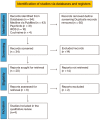Treatment of Aggressive Behavior and Agitation in an 11-Year-Old Boy with Co-Occurring Autism and ADHD: A Case Report and Literature Review on the Use of Intravenous Valproate in Emergency Psychiatry
- PMID: 38930101
- PMCID: PMC11204411
- DOI: 10.3390/jcm13123573
Treatment of Aggressive Behavior and Agitation in an 11-Year-Old Boy with Co-Occurring Autism and ADHD: A Case Report and Literature Review on the Use of Intravenous Valproate in Emergency Psychiatry
Abstract
Background: Autism spectrum disorder (ASD) is a persistent neurodevelopmental disorder frequently co-occurring with attention-deficit/hyperactivity disorder (ADHD) and behavior-related disorders. While behavioral therapy is the first-line option to manage the core symptoms of ASD, pharmacological therapy is sometimes needed to treat acute problems, such as agitation and aggressive behaviors. Recent guidelines recommend the use of neuroleptics to reduce psychomotor agitation in patients with ASD. However, as children with ASD are often drug-resistant, alternative treatments are often justified. Reports from the literature have indicated that intravenous valproate (IV-VPA) can be effective in reducing agitation in psychiatric patients, with a lower frequency of adverse events compared to conventional treatments. However, as the related findings are occasionally inconsistent, IV-VPA is not yet an approved option in the context of clinical psychiatry. We aim to improve knowledge of the IV-VPA treatment option for emergency psychiatric treatment in pediatric patients. Methods: We report the case of an 11-year-old boy suffering from a complex neurodevelopmental condition who experienced a psychotic episode with severe aggressive and disruptive behaviors and was successfully treated with IV-VPA. Furthermore, we provide an updated literature review on this topic. Conclusion: In our case, first-line therapies proved to be ineffective. To the contrary, IV-VPA led to safe and prompt clinical success, which is in line with other reports. Based on our literature review, IV-VPA can be highly effective and reduces the risk of adverse events that frequently occur with the use of high-dose standard medications in emergency psychiatry.
Keywords: ADHD; agitation; autism; intravenous valproate.
Conflict of interest statement
The authors declare no conflicts of interest.
Figures



Similar articles
-
Prenatal valproate exposure and adverse neurodevelopmental outcomes: Does sex matter?Epilepsia. 2021 Mar;62(3):709-719. doi: 10.1111/epi.16827. Epub 2021 Feb 5. Epilepsia. 2021. PMID: 33547648
-
Guidance for identification and treatment of individuals with attention deficit/hyperactivity disorder and autism spectrum disorder based upon expert consensus.BMC Med. 2020 May 25;18(1):146. doi: 10.1186/s12916-020-01585-y. BMC Med. 2020. PMID: 32448170 Free PMC article.
-
Letter to the Editor: CONVERGENCES AND DIVERGENCES IN THE ICD-11 VS. DSM-5 CLASSIFICATION OF MOOD DISORDERS.Turk Psikiyatri Derg. 2021;32(4):293-295. doi: 10.5080/u26899. Turk Psikiyatri Derg. 2021. PMID: 34964106 English, Turkish.
-
Prenatal valproate in rodents as a tool to understand the neural underpinnings of social dysfunctions in autism spectrum disorder.Neuropharmacology. 2019 Nov 15;159:107477. doi: 10.1016/j.neuropharm.2018.12.024. Epub 2019 Jan 9. Neuropharmacology. 2019. PMID: 30639388 Review.
-
Practitioner Review: Pharmacological treatment of attention-deficit/hyperactivity disorder symptoms in children and youth with autism spectrum disorder: a systematic review and meta-analysis.J Child Psychol Psychiatry. 2021 Jun;62(6):680-700. doi: 10.1111/jcpp.13305. Epub 2020 Aug 26. J Child Psychol Psychiatry. 2021. PMID: 32845025
Cited by
-
Aggressive behavior in adolescent patients with mental disorders: what we can do.Transl Pediatr. 2024 Dec 31;13(12):2183-2192. doi: 10.21037/tp-24-330. Epub 2024 Dec 27. Transl Pediatr. 2024. PMID: 39822997 Free PMC article.
References
-
- Di Luzio M., Guerrera S., Pontillo M., Lala M.R., Casula L., Valeri G., Vicari S. Autism spectrum disorder, very-early onset schizophrenia, and child disintegrative disorder: The challenge of diagnosis. A case-report study. Front. Psychiatry. 2023;14:1212687. doi: 10.3389/fpsyt.2023.1212687. - DOI - PMC - PubMed
-
- Bak M., Weltens I., Bervoets C., De Fruyt J., Samochowiec J., Fiorillo A., Sampogna G., Bienkowski P., Preuss W.U., Misiak B., et al. The pharmacological management of agitated and aggressive behavior: A systematic review and meta-analysis. Eur. Psychiatry. 2019;57:78–100. doi: 10.1016/j.eurpsy.2019.01.014. - DOI - PubMed
Publication types
LinkOut - more resources
Full Text Sources

